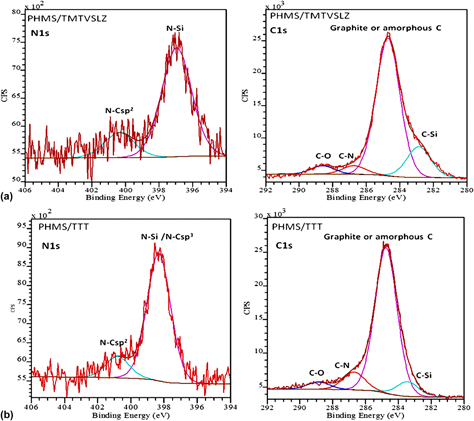Crossref Citations
This article has been cited by the following publications. This list is generated based on data provided by
Crossref.
Peng, Haibo
Yu, Jin-Tao
Bao, Weijie
Xu, Jinwei
and
Cheng, Jiang
2015.
The N-silylation of sulfoximines.
Organic & Biomolecular Chemistry,
Vol. 13,
Issue. 43,
p.
10600.
Marciniec, Bogdan
Maciejewski, Hieronim
and
Pawluć, Piotr
2017.
Organosilicon Compounds.
p.
169.
Zhang, Miao
Liao, Ningbo
Xue, Wei
and
Yang, Ping
2017.
Large-scale molecular dynamics modeling of boron-doped amorphous SiCO ceramics.
Journal of Molecular Modeling,
Vol. 23,
Issue. 6,
Marciniec, Bogdan
Maciejewski, Hieronim
Pietraszuk, Cezary
and
Pawluć, Piotr
2017.
Applied Homogeneous Catalysis with Organometallic Compounds.
p.
569.
Awin, Eranezhuth Wasan
Lale, Abhijeet
Hari Kumar, K.C.
Demirci, Umit B.
Bernard, Samuel
and
Kumar, Ravi
2018.
Plasmon enhanced visible light photocatalytic activity in polymer-derived TiN/Si-O-C-N nanocomposites.
Materials & Design,
Vol. 157,
Issue. ,
p.
87.
Bruzzoniti, Maria Concetta
Appendini, Marta
Onida, Barbara
Castiglioni, Michele
Del Bubba, Massimo
Vanzetti, Lia
Jana, Prasanta
Sorarù, Gian Domenico
and
Rivoira, Luca
2018.
Regenerable, innovative porous silicon-based polymer-derived ceramics for removal of methylene blue and rhodamine B from textile and environmental waters.
Environmental Science and Pollution Research,
Vol. 25,
Issue. 11,
p.
10619.
Chen, Jiewei
Niu, Min
Calvin, Jason
Asplund, Megan
King, Sean W.
Woodfield, Brian F.
and
Navrotsky, Alexandra
2018.
Thermodynamics of amorphous SiN(O)H dielectric films synthesized by plasma‐enhanced chemical vapor deposition.
Journal of the American Ceramic Society,
Vol. 101,
Issue. 5,
p.
2017.
Bruzzoniti, Maria C.
Appendini, Marta
Rivoira, Luca
Onida, Barbara
Del Bubba, Massimo
Jana, Prasanta
and
Sorarù, Gian Domenico
2018.
Polymer‐derived ceramic aerogels as sorbent materials for the removal of organic dyes from aqueous solutions.
Journal of the American Ceramic Society,
Vol. 101,
Issue. 2,
p.
821.
Zera, Emanuele
Brancaccio, Elvirosa
Tognana, Lorenzo
Rivoira, Luca
Bruzzoniti, Maria Concetta
and
Sorarù, Gian Domenico
2018.
Reactive Atmosphere Synthesis of Polymer‐Derived Si–O–C–N Aerogels and Their Cr Adsorption from Aqueous Solutions.
Advanced Engineering Materials,
Vol. 20,
Issue. 7,
Canuto de Almeida e Silva, Thamires
Mooste, Marek
Kibena-Põldsepp, Elo
Matisen, Leonard
Merisalu, Maido
Kook, Mati
Sammelselg, Väino
Tammeveski, Kaido
Wilhelm, Michaela
and
Rezwan, Kurosch
2019.
Polymer-derived Co/Ni–SiOC(N) ceramic electrocatalysts for oxygen reduction reaction in fuel cells.
Catalysis Science & Technology,
Vol. 9,
Issue. 3,
p.
854.
Xie, Fangtong
Gonzalo‐Juan, Isabel
Breitzke, Hergen
Fasel, Claudia
Trapp, Maximilian
Buntkowsky, Gerd
Kleebe, Hans‐Joachim
Riedel, Ralf
Boccaccini, Aldo R.
and
Ionescu, Emanuel
2019.
Effect of Ca and B incorporation into silicon oxycarbide on its microstructure and phase composition.
Journal of the American Ceramic Society,
Vol. 102,
Issue. 12,
p.
7645.
Shao, Gaofeng
Hanaor, Dorian A. H.
Wang, Jun
Kober, Delf
Li, Shuang
Wang, Xifan
Shen, Xiaodong
Bekheet, Maged F.
and
Gurlo, Aleksander
2020.
Polymer-Derived SiOC Integrated with a Graphene Aerogel As a Highly Stable Li-Ion Battery Anode.
ACS Applied Materials & Interfaces,
Vol. 12,
Issue. 41,
p.
46045.
Taheri, Poroshat
Bokka, Apparao
Asgari, Parham
Jeon, Junha
Lang, John C.
Campostrini, Renzo
Sorarù, Gian Domenico
and
Kroll, Peter
2020.
Novel Sulfur‐Containing Cross‐Linking Agent for Si‐Based Preceramic Polymers.
Macromolecular Chemistry and Physics,
Vol. 221,
Issue. 2,
Krasovskii, Pavel V.
Samokhin, Andrey V.
Kirpichev, Dmitry E.
Sigalaev, Sergey K.
and
Sirotinkin, Vladimir P.
2020.
Carbon forms, carbide yield and impurity-driven nonstoichiometry of plasma-generated β-silicon carbide nanopowders.
Materials Chemistry and Physics,
Vol. 253,
Issue. ,
p.
123077.
Santhosh, Balanand
Vakifahmetoglu, Cekdar
Ionescu, Emanuel
Reitz, Andreas
Albert, Barbara
and
Sorarù, Gian Domenico
2020.
Processing and thermal characterization of polymer derived SiCN(O) and SiOC reticulated foams.
Ceramics International,
Vol. 46,
Issue. 5,
p.
5594.
Wang, Jun
Gili, Albert
Grünbacher, Matthias
Praetz, Sebastian
Epping, Jan Dirk
Görke, Oliver
Schuck, Götz
Penner, Simon
Schlesiger, Christopher
Schomäcker, Reinhard
Gurlo, Aleksander
and
Bekheet, Maged F.
2021.
Silicon oxycarbonitride ceramic containing nickel nanoparticles: from design to catalytic application.
Materials Advances,
Vol. 2,
Issue. 5,
p.
1715.
Ricohermoso, Emmanuel
Rosenburg, Felix
Klug, Florian
Nicoloso, Norbert
Schlaak, Helmut F.
Riedel, Ralf
and
Ionescu, Emanuel
2021.
Piezoresistive carbon-containing ceramic nanocomposites – A review.
Open Ceramics,
Vol. 5,
Issue. ,
p.
100057.
Fei, Xuening
Li, Shuai
Wu, Bin
Ren, Fuxiong
Zhu, Sen
Cao, Linyun
and
Liu, Lijuan
2022.
Properties of a composite pigment of C.I. pigment red 177 prepared via a solid-state ball milling method.
Dyes and Pigments,
Vol. 203,
Issue. ,
p.
110331.
Zambotti, Andrea
Valentini, Francesco
Lodi, Emanuele
Pegoretti, Alessandro
Tyrpekl, Václav
Kohúteková, Soňa
Sorarù, Gian Domenico
Kloda, Matouš
and
Biesuz, Mattia
2022.
Thermochemical heat storage performances of magnesium sulphate confined in polymer-derived SiOC aerogels.
Journal of Alloys and Compounds,
Vol. 895,
Issue. ,
p.
162592.
Ding, Chengxi
Hu, Dongxiao
He, Xinrui
Lai, Yifan
and
Shao, Gaofeng
2022.
Fabrication and microstructure evolution of monolithic bridged polysilsesquioxane-derived SiC ceramic aerogels.
Ceramics International,
Vol. 48,
Issue. 18,
p.
25833.





